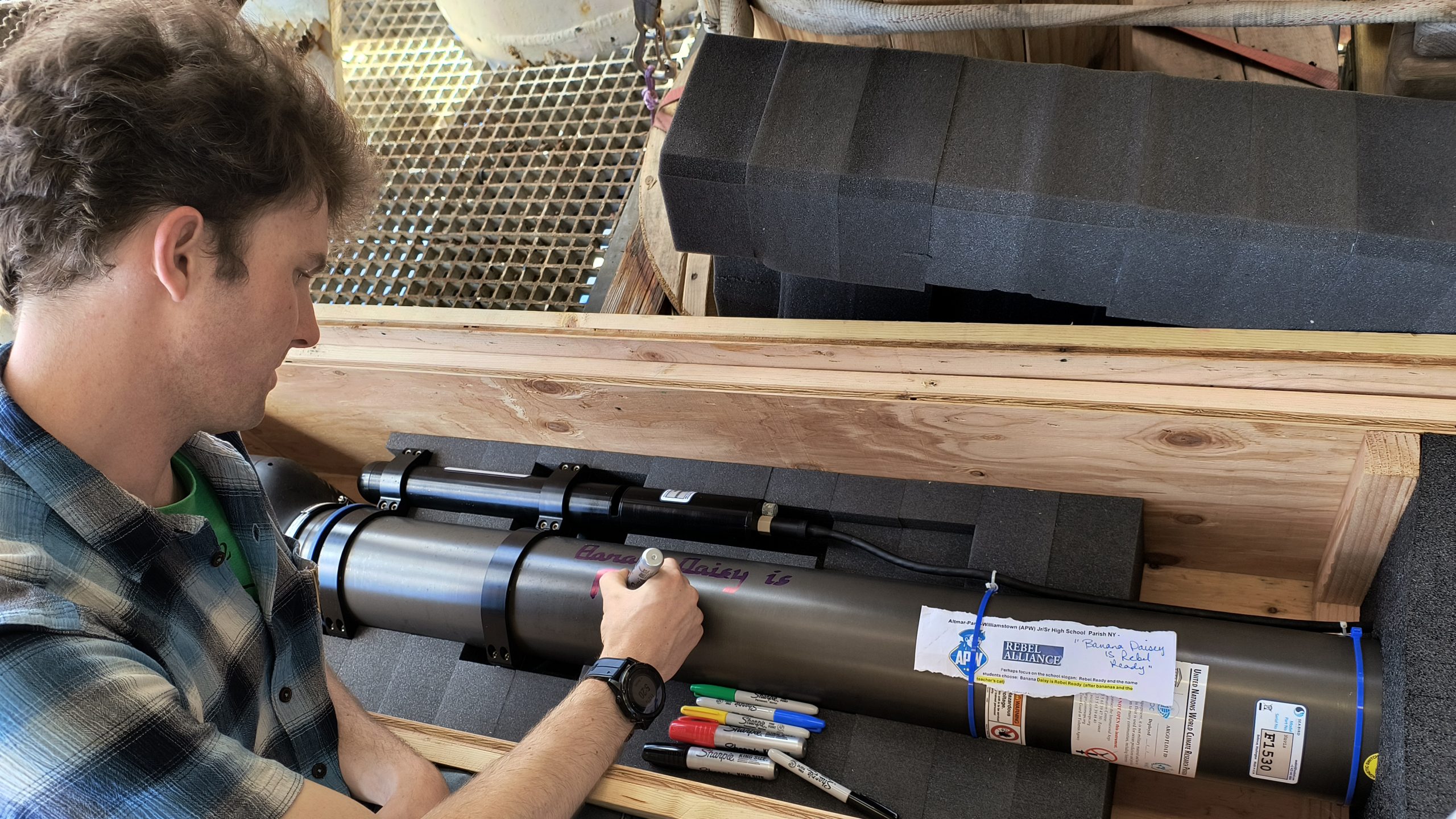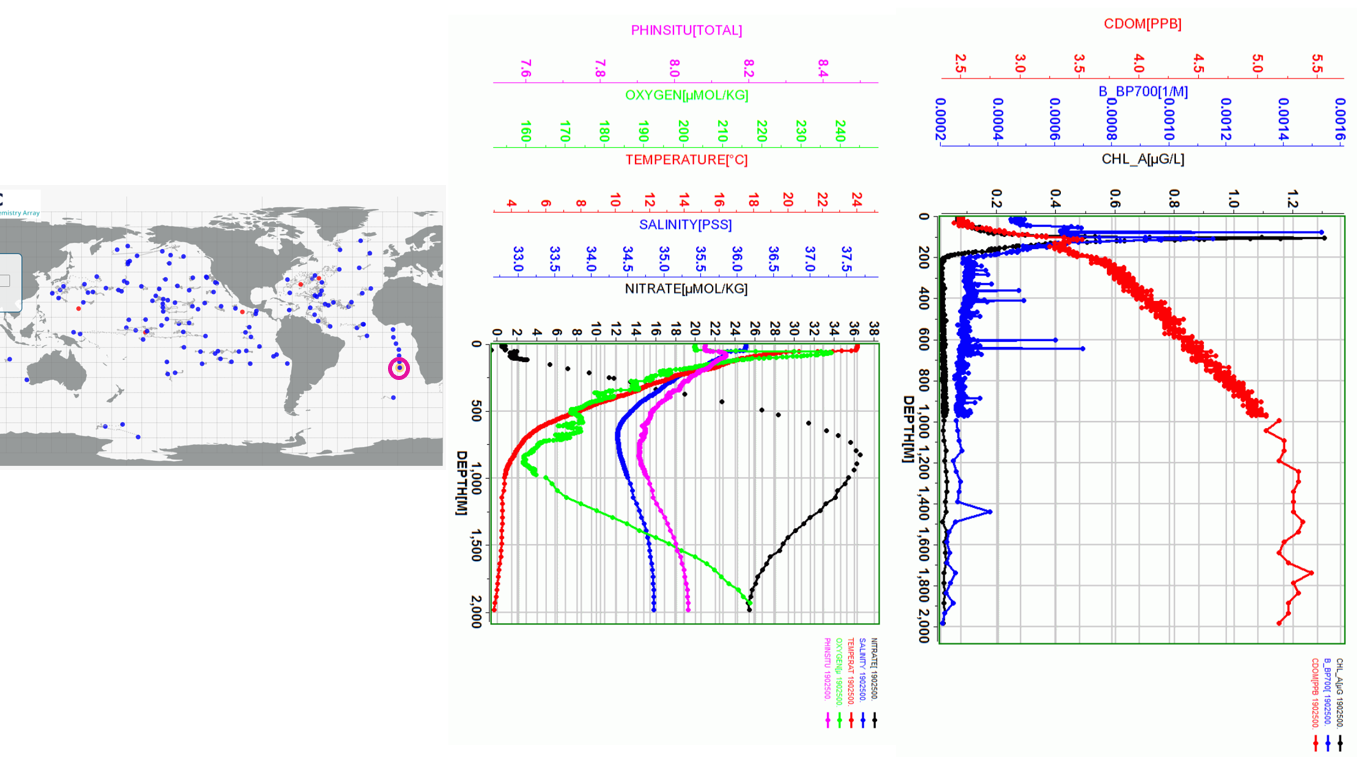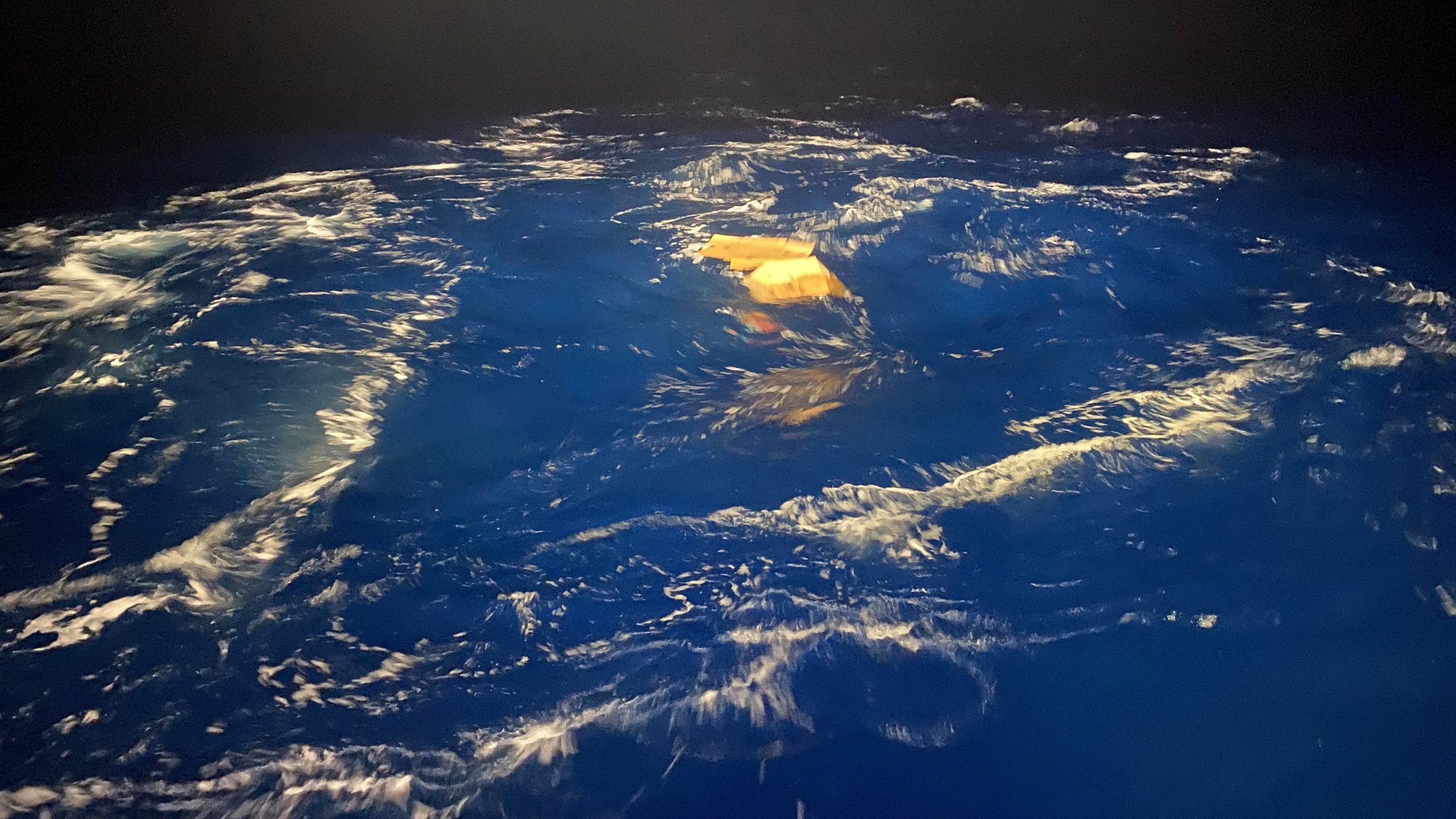GO-BGC Floats - Part 2
13 March 2024
An earlier blog in our series described the Global Ocean Biogeochemistry Array (GO-BGC) program and their Adopt-a-Float outreach program. We showcased the first six of the 11 GO-BGC Navis Argo floats from Woods Hole Oceanographic Institution (WHOI) that we decorated according to the designs and descriptions sent from their adoptive schools. If you missed that blog, make sure to check it out!
At the point of the earlier blog, we had only completed decorating six of the floats (Stanford Online High School’s Sea Pixel; Pensacola Catholic High School’s Crubotics Floatosynthesis; Ramsey High School’s Rowdy the Ram; Doral Academy’s Sea Dragons; Smithtown High School West’s the Whisper, and Oak Harbor Intermediate’s Sea Panthers). All six of these floats have been deployed and are gathering data for scientists and students to analyze and learn more about the ocean’s biogeochemical cycles and how the ocean affects our climate. Members of the A13.5 science team and Langseth crew members decorated these floats during our transit to Station 1 for our first cast of the CTD Rosette.
We finally found some time where science team members from both the day and night crews could stop in on the streamer deck where the floats are stored to decorate the final five in between gathering samples from the CTD rosette, processing samples in the labs and deploying floats and drifters. Side note: We are currently preparing to begin our next CTD cast at station #104, so we have been working 24-7 gathering data for the past weeks moving from station 1 to 104 along the A13.5 transect!
The picture above highlights Josh Kasinger, Lamont-Doherty Earth Observatory (LDEO) Marine Science Technician, deploying the Haysville Middle School Hawks Float Nest BGC Navis Argo float from the stern of the main deck of the Langseth (Photo by Jesse Anderson, ESR), and below are pictures of the remaining five of the floats we recently decorated.
- Alma Bryant High School, Irvington, AL: Hurricane Wilson and Bayou Bob-er
- Selma High School, Selma, AL: Saints Green Team
- Haysville Middle School, Haysville, KA: Hawks Float Nest
- APW Jr/Sr High School, Parish, NY: Banana Daisy is Rebel Ready
Data from the floats that have been deployed are streaming in! The first profile from each float is checked by the GO-BGC data team to ensure all sensors are functioning as expected. The multiple sensors on GO-BGC floats provide measurements of ocean pressure, temperature, salinity, dissolved oxygen, backscattering (a measurement of suspended particles and light), fluorescence (a measurement of chlorophyll), pH, and nitrate. These individual measurements can then be combined in different ways for scientists to study ocean circulation, ecosystem and biological cycles, and carbon cycling.
The first 2 profiles from Float 1542, The Hawk’s Float Nest. Data can be accessed and plotted at http://www3.mbari.org/gobgc/GOBGCViz.htm.
For example, nitrate and oxygen concentrations in the ocean are essential to studies of net community production (the balance of photosynthetic growth vs. consumption) because photosynthesis consumes nitrate and produces the oxygen which animals like humans need. Therefore, changes to oxygen and nitrate in the ocean are of great importance to humans and ecosystems alike, though most of the changes are due to human activity: an excess of nitrate (e.g. from fertilizer runoff) can overstimulate production leading to low oxygen dead zones like the one in the Gulf of Mexico, additionally ocean warming resulting from climate change lowers ocean oxygen levels. Both of these processes produce a deficit of oxygen and can degrade ecosystems and fisheries.
Another process which can be monitored on a global scale by the network of GO-BGC floats, as well as by water sampling campaigns like this expedition, is the ongoing process of ocean acidification caused by declining seawater pH. pH describes the acid-base balance in seawater. Ocean acidification is caused by invasion of the sea by carbon dioxide (CO2) released from fossil fuel consumption and other sources. We can measure this dissolved CO2 in water directly on the Langseth, but GO-BGC float measurements can also be used to estimate dissolved inorganic carbon (DIC, the concentration of carbon dioxide its dissociation products in water) and the partial pressure of CO2 (pCO2, which controls how fast CO2 moves between the atmosphere and ocean) by combining pH, temperature, salinity, and other parameters. The equations used to do this are complex, but the qualitative relationships are straightforward: colder water can hold more CO2, while warmer water holds less (just like warm soda which releases its CO2 bubbles). Similarly, water with more dissolved minerals which buffer chemical changes (alkalinity) can hold more CO2 at a given pH. The end result of these calculations of CO2 in seawater is a detailed description of where carbon accumulates in the ocean, where it goes, and how it changes the marine ecosystems that sustain our planet.
By measuring just a few seawater chemical parameters, BGC-Argo floats can describe many of the changes the ocean is undergoing as a result of climate change and ocean acidification. They’re one important strategy oceanographers use to study and observe the ocean. Many of the ocean properties measured by GO-BGC floats are also being measured during the A13.5 cruise. There is a nice synergy between data collected from ships during GO-SHIP hydrographic cruises and those collected by autonomous floats. Highly accurate data obtained by doing wet chemistry on ships is essential for evaluating the accuracy and quality of float data.
Floats provide data with a time frequency and spatial resolution not feasibly obtained by ships. The higher resolution data from floats are expected to reveal new insights into the ocean’s climate and biogeochemical cycles, especially in regions not easily observed or those with large seasonal cycles. However, shipboard observations remain the only way to measure deep sea chemistry. The growing network of “Deep Argo” floats, capable of measuring temperature and salinity to 6000 meters, are enhancing our deep ocean observational network.
For more information, visit the Global Ocean Biogeochemistry Array (GO-BGC) program website.
Teresa Kennedy (UT Tyler; URI) and Daniel Sandborn (UM–Duluth), CTD Watchstanders, with Jesse Anderson (ESR), A13.5 Co-Chief Scientist.

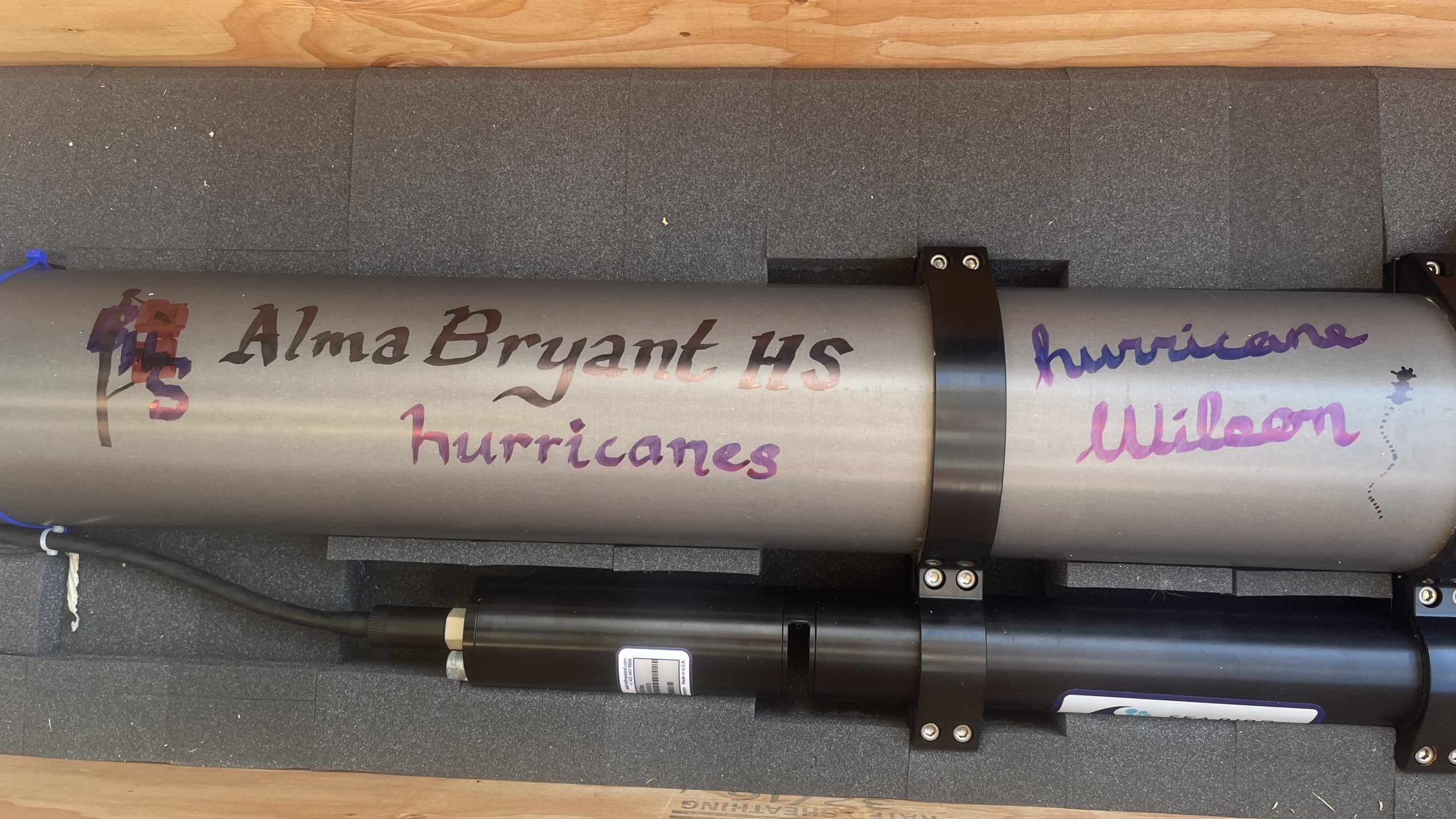
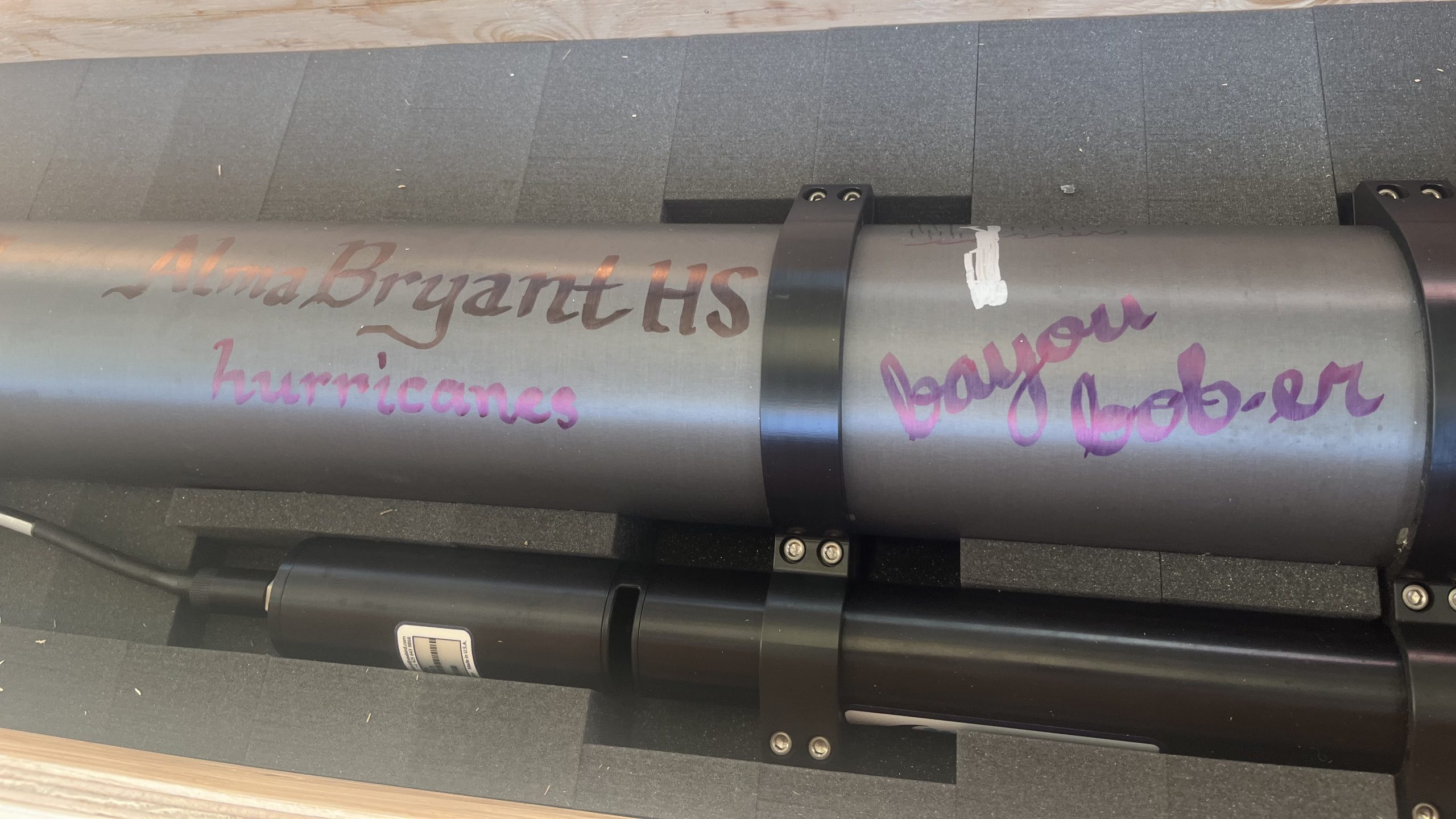
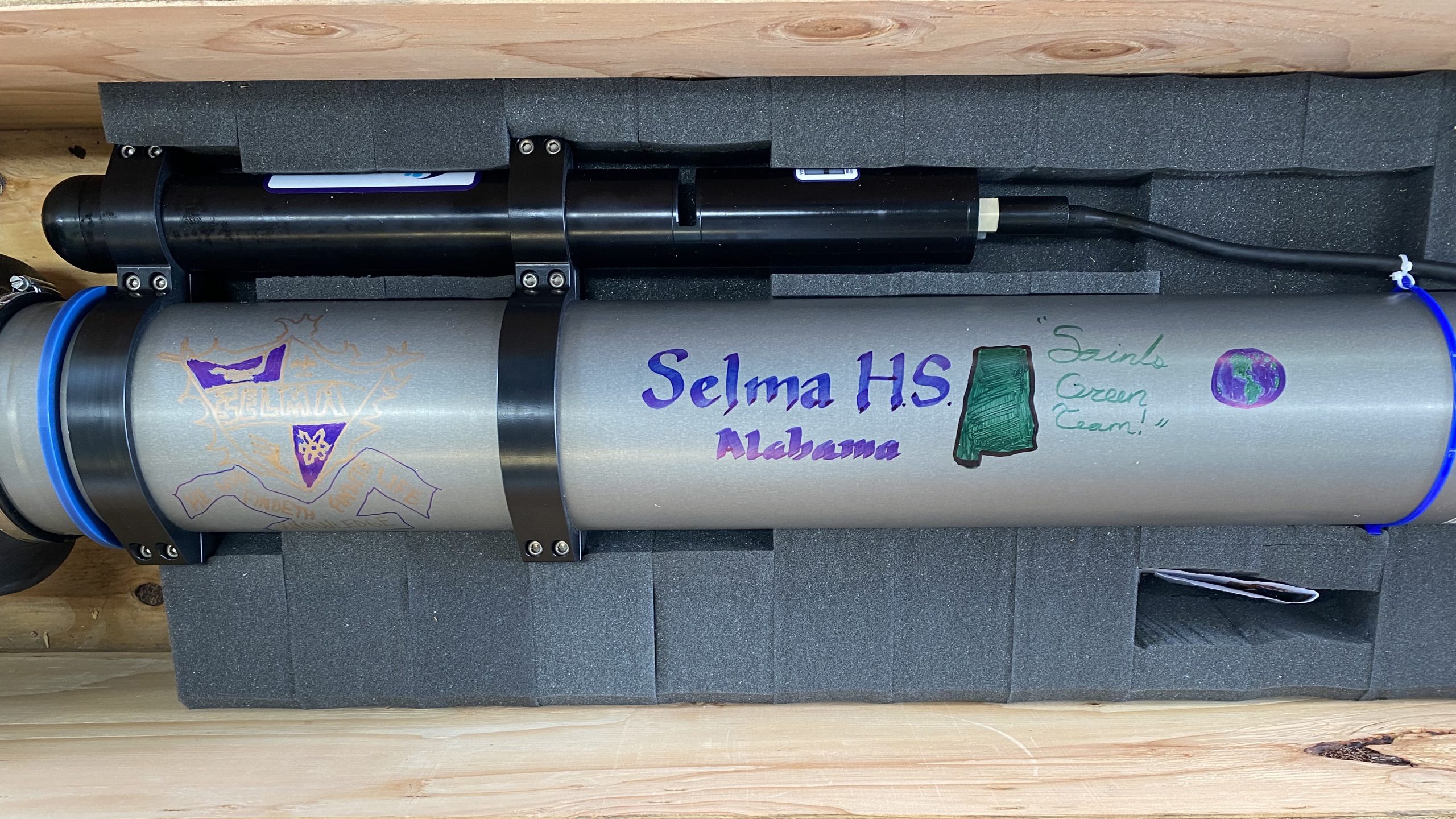
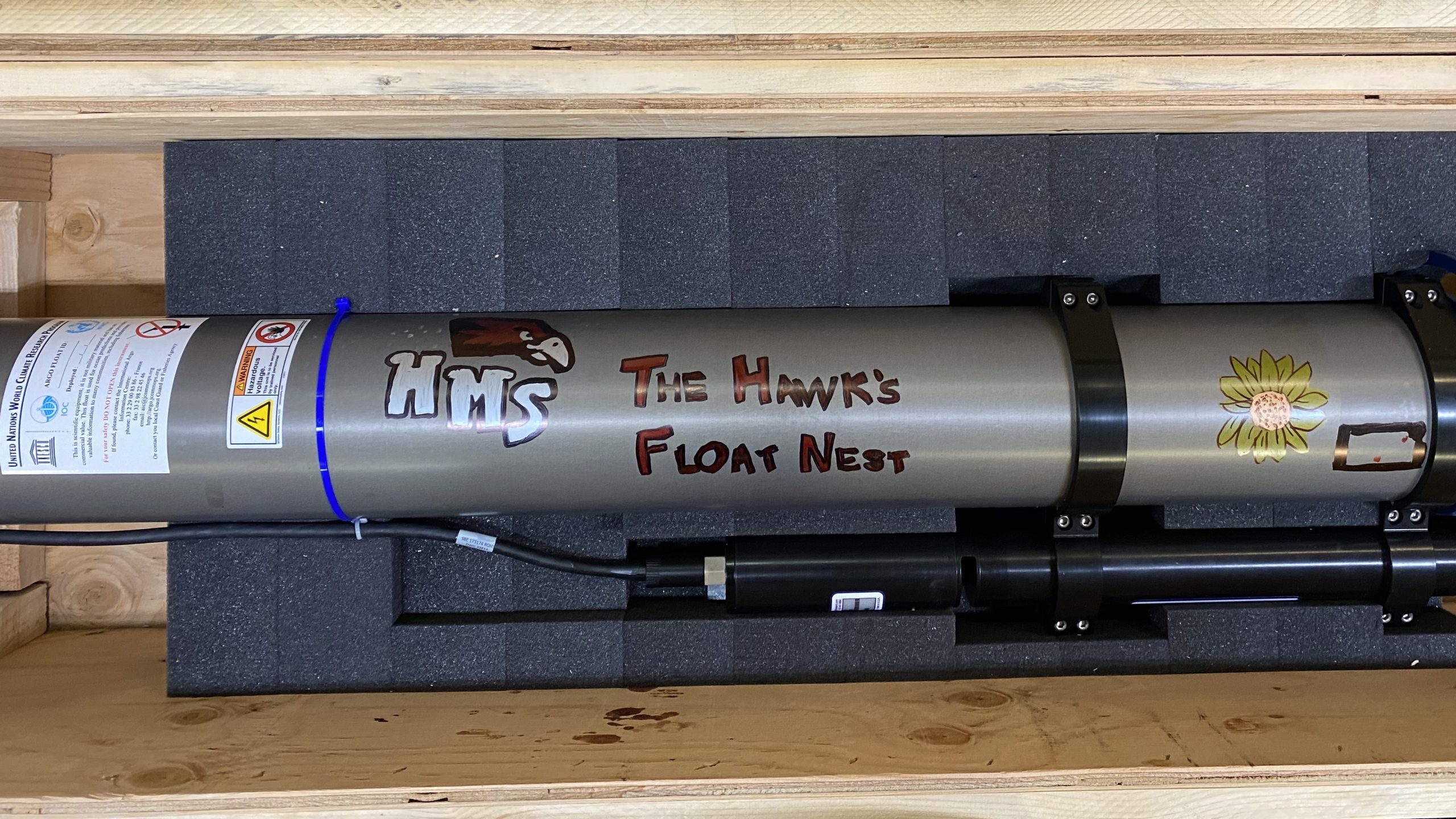
![PIC 6 BananaDaisy APW Jr/Sr High School’s Banana Daisy is Rebel Ready Argo float was decorated by Jennifer Aicher (UM Rosenstiel School of Marine, Atmospheric, and Earth Science) and Daniel Sandborn (UM–Duluth). Picture by Zach Erickson (NOAA)]](https://www.go-bgc.org/wp-content/uploads/2024/03/PIC-6-BananaDaisy-scaled.jpeg)
